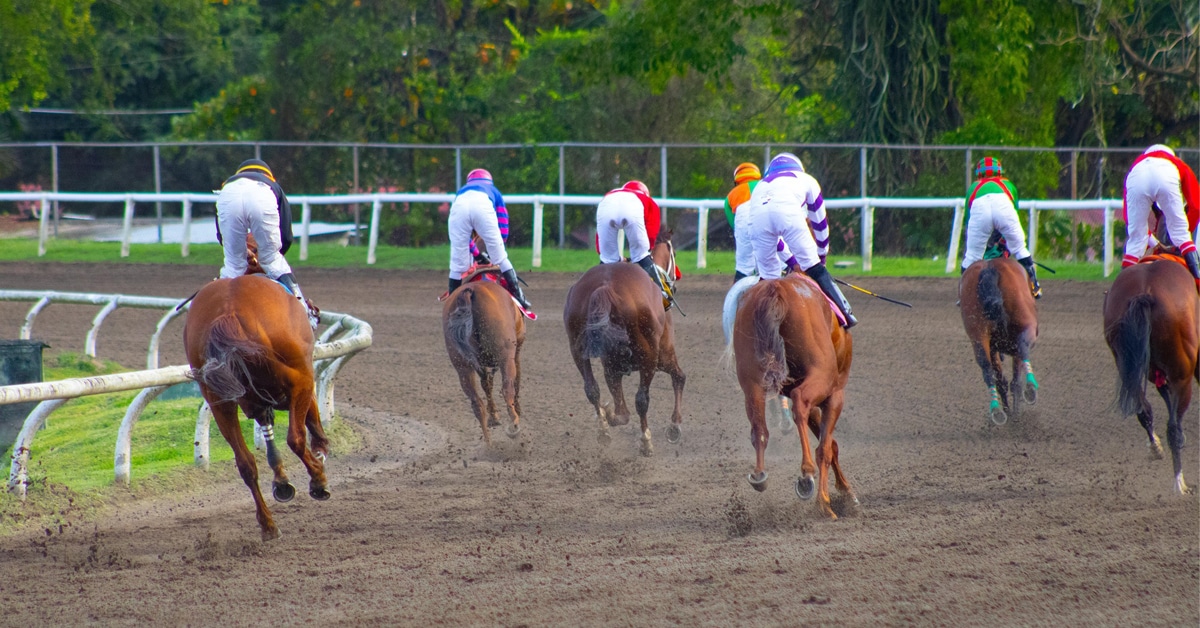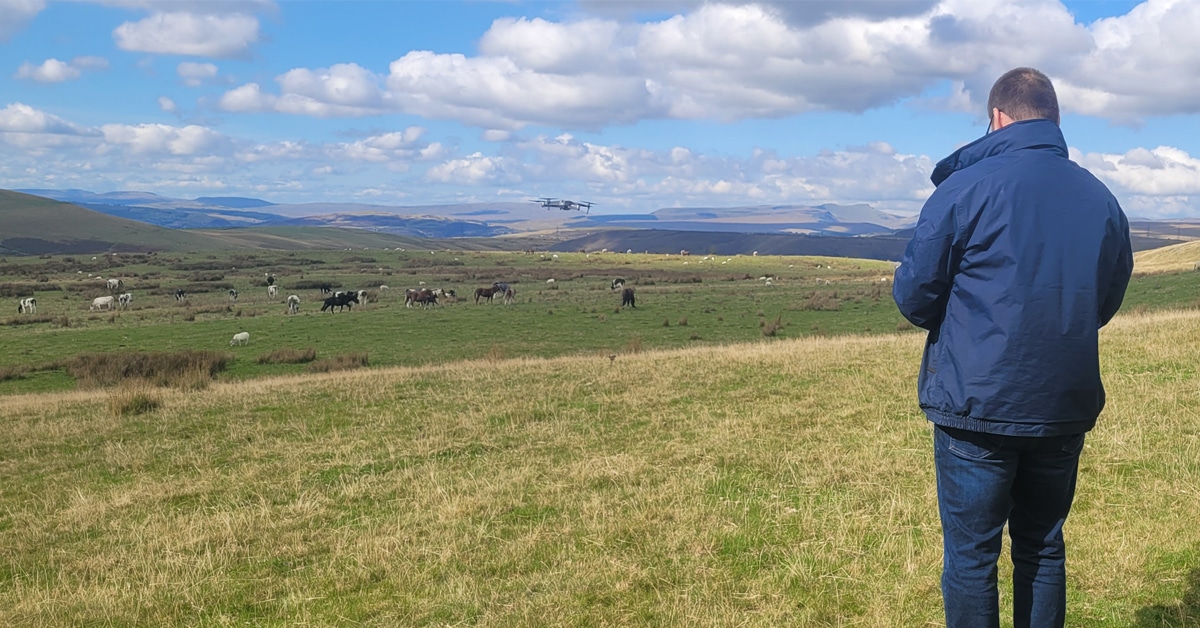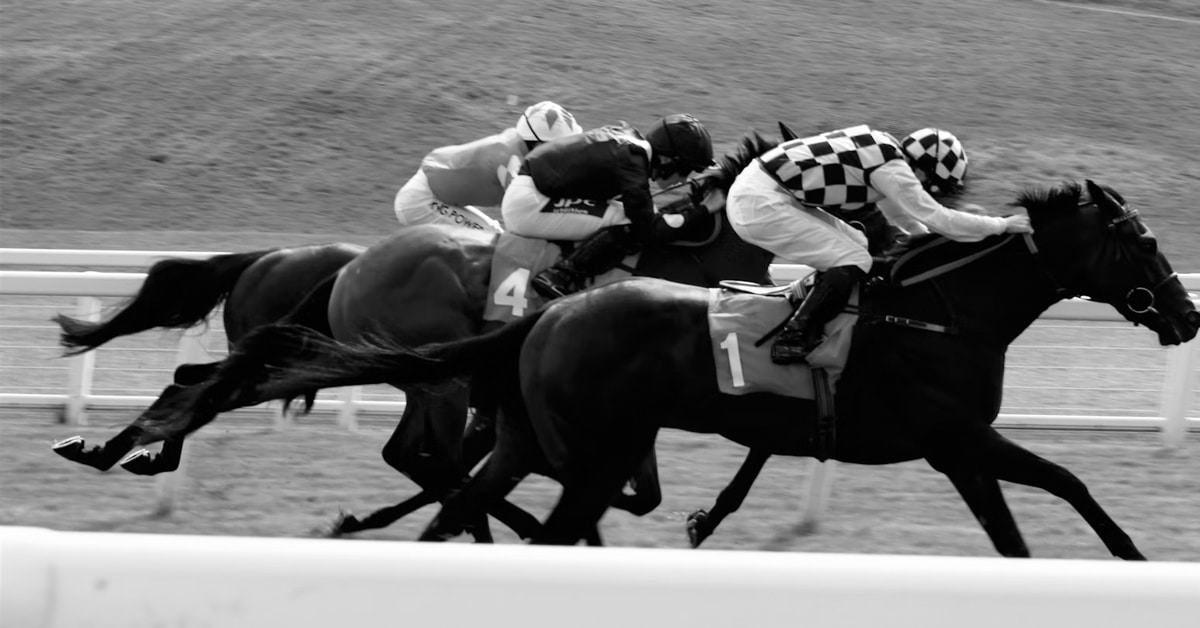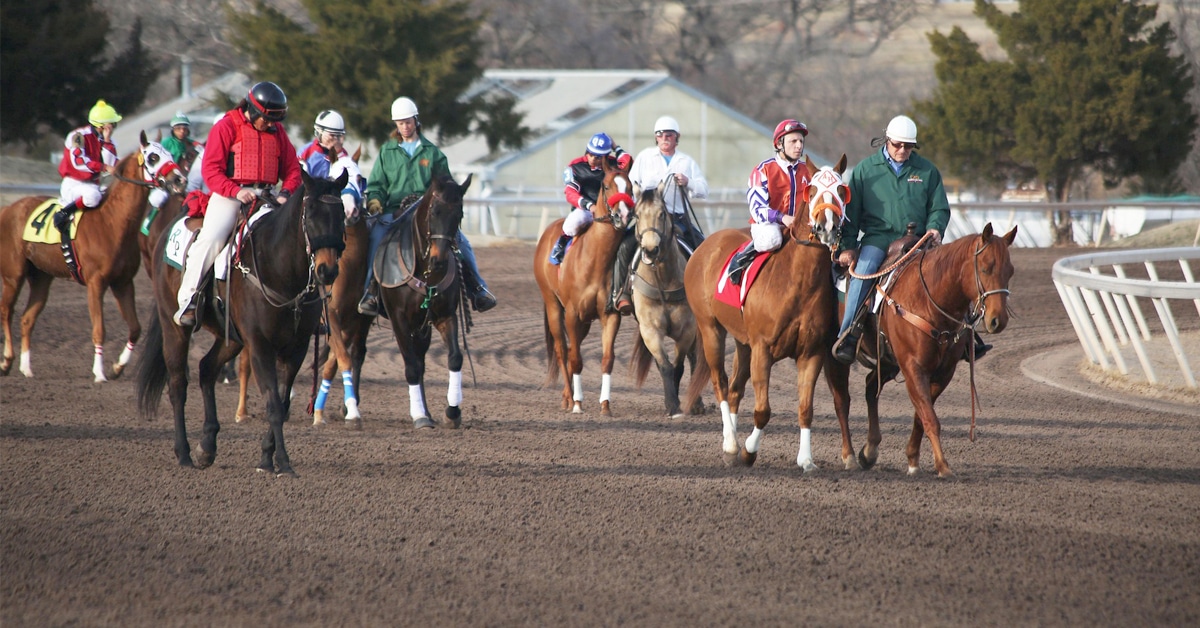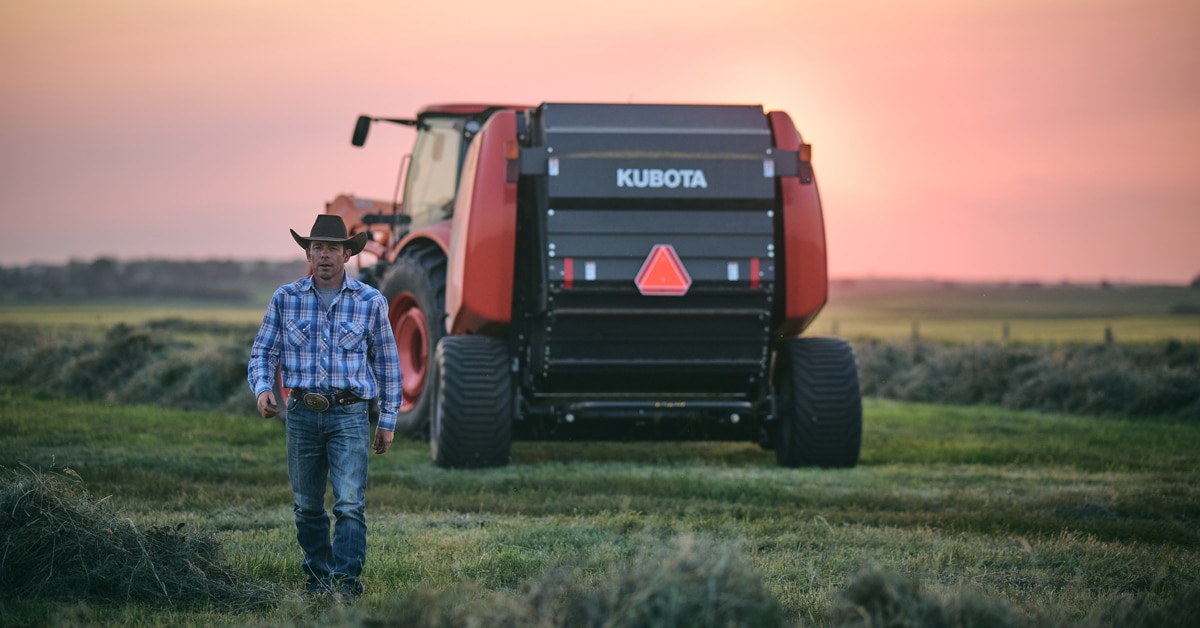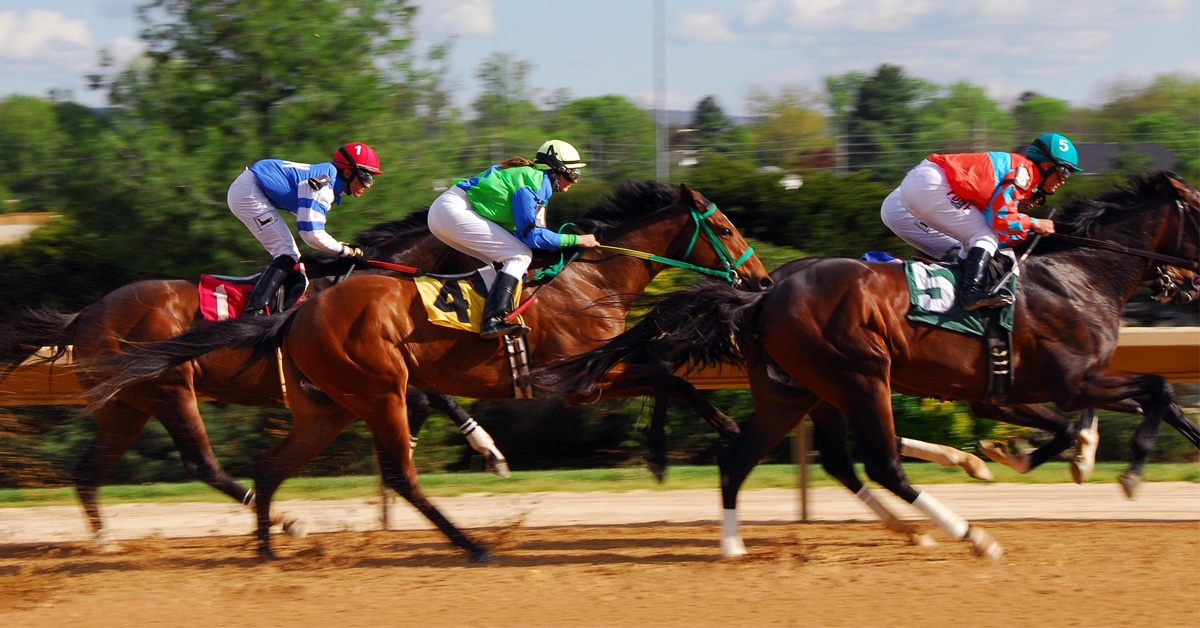A friend recently sent me a short video clip of their horse engaged with another as they nibbled on each other’s withers (“allogrooming” in equine-science speak). Although the clip took me immediately to my feel-good place, I was struck that what made this moment so video-worthy was how rarely we see it in our modern show stables. We rarely send video clips to our friends of our horses drinking water, for example, yet allogrooming, and other social behaviours between horses, is no less essential to their survival, and welfare.
A walk down the aisle of a typical training facility, with horses housed in spacious, deeply-bedded stalls, or enjoying an appointment with their massage therapist does not bring images of compromised animal welfare to mind. From a human perspective, modern day equestrian facilities appear to be designed with the horse’s health and safety at heart, yet confront horses with environmental challenges that stretch their ability to adapt. In reality, most facilities are actually designed primarily for human convenience.
What is Good Equine Welfare?
Helen Proctor, from the World Society for the Protection of Animals in London, argues that to assess good animal welfare we must not only consider an animal’s capacity to experience pain and to suffer, or that basic needs are being met. As well, we must consider an animal’s psychological needs (to form bonds, to experience joy, to forage, to be free from fear, etc.) that may also be unmet (2012). If our horses seem content, are performing well, and are not demonstrating any obvious physiological distress, we assume that they are experiencing a good quality of life.
However, good equine welfare must also address the mental health of the horse, including their emotional and psychological states (Hall et al., 2018; Hall et al., 2019; Randle et al., 2019). Since horses don’t always show their suffering (as prey animals, it is not evolutionarily adaptive to do so), knowing when they are experiencing a good quality of life is often not as obvious as we imagine.
I would argue that most of our show horses and many of our pleasure horses are not experiencing stellar equine welfare, not because we are heartless, but because we have bought into an industry norm of equine housing and management that serves our needs first and our horses’ needs not very well. In spite of significant research demonstrating the detrimental effects of singly housing horses in box stalls, this remains the primary housing management system for most sport horses (32% to 90% depending on the country), and the more expensive the horse, the more likely they are to be denied social interaction with other horses (Ruet et al., 2019).
Horses’ Ethological Needs Matter
Researchers suggest that animals have needs to perform natural behaviours that persist even after the physiological requirements of that need have been satisfied. A horse may still have a need to forage, for example, even though the animal’s nutritional requirements have been met in scheduled feedings. A behaviour is considered to be an “ethological need” when: a) the animal is highly motivated to perform the behaviour; b) the behaviour is self-rewarding; c) preventing the behaviour results in a rebound effect (i.e. the behaviour is performed more vigorously after a period of prevention); and d) the suppression of the behaviour results in chronic stress (Hughes & Duncan, 1988; Jensen & Pederson, 2008).
In a literature review examining various equine behaviours that may or may not reach the criteria of an “ethological need,” Matcheld vanDierendonck, from the Netherlands (2016), concluded that allogrooming and to a lesser extent social play meet these criteria, and that horses that are prevented from performing these behaviours experience serious negative welfare consequences. Other experts agree. Equine scientist Paul McGreevy led a team of 18 researchers, with unique expertise in psychology, equitation science, veterinary science, education, welfare, equestrian coaching and advocacy – a veritable who’s who of equine science – to assess the welfare impact of 116 common management, veterinary and training equine interventions (2018). Using the Five Domains Model (which assess animal welfare across the domains of nutrition, environment, health, behaviour and mental state) the panelists appraised the potential welfare impact of each intervention under each domain, with Domain 5 being an assessment of the overall mental or psychological impact on the animal (McGreevy et al., 2018).
Not surprisingly, interventions that received high scores across all domains for their adverse impact included such procedures as ear twitches, tongue ties, starting young horses by dropping them with ropes, prolonged forced flexion and severely restrictive nosebands. However, one of the highest adverse impact scores was given for housing horses in individual box stalls and was identified as being a “substantial affront to welfare.” As the panelists noted, “recognition of the severity of the distress that [housing in social isolation] can cause should persuade owners to consider more sympathetic housing arrangements.”
What Does Research say about Housing Horses Individually?
Isolated horses are stressed. French researchers Alice Ruet and colleagues (2019) conducted behavioural scans (recording horses’ behaviours for 50 non-consecutive days, over nine months) on 187 sport horses managed in individual stalls with no access to paddock or pasture turn out – clearly the most isolating arrangement for individual housing. Using four behavioural indicators, they found substantial evidence of compromised welfare: the presence of oral stereotypies (such as cribbing) in 14.4% of horses, locomotor stereotypies (such as weaving and stall walking) in 18.7%, aggressiveness toward humans in 40%, stress-related behaviours in 13% and unresponsiveness to the environment in 24%. Next, they explored whether any potential enriching environmental factors (e.g. grilled windows between horses, straw bedding, duration and intensity of ridden exercise, etc.), to which some horses had access and others did not, would have an ameliorating impact on these negative behavioural welfare indicators. Sadly, almost none of the variables tested had any influence on the horses’ behaviour. The authors suggest that when horses are so severely isolated and restricted that even factors found to have a positive effect on horses housed in less restricted environments will not be sufficient to positively impact their negative welfare state.
More evidence about the detrimental nature of single housing comes from a prospective study (i.e. following subjects over time) that examined the impact of first time stabling on 36 two-year-old, non-stereotypic Warmblood colts and fillies (Visser, Ellis, & Van Reenen, 2008). For 12 weeks, half the horses were housed in individual stalls while the other half pair-shared a larger stall. Strikingly, by the study’s end, 67% of the individually housed horses developed serious stereotypies such as cribbing and weaving, whereas no stereotypies were seen in the pair-housed horses. Since none of the horses exhibited stereotypies at the study’s onset, this prospective research provides a convincing causal link between social isolation and the development of stereotypies.
Isolated horses are depressed. Furieux and colleagues (2012) found that 24% of 59 French sport horses from three different riding schools, housed individually in box stalls, exhibited a “withdrawn posture” (low flat neck, fixed unblinking stare, flat immobile ears, and a complete disinterest in their environment) that parallels the “behavioural despair” seen in humans suffering from severe depression. Furieux then tested whether these horses who looked clinically depressed were experiencing a key symptom of human depression, that of anhedonia – or the loss of pleasure. Laboratory rats, who are normally confirmed sugar junkies, will become indifferent to sugar when chronically stressed, suggesting a state of anhedonia. Furieux’s withdrawn horses responded similarly, losing interest in sugar, seemingly because life, even life with sugar, was simply not that engaging any more.
Ruet also found that the longer horses had been housed in social isolation, the more likely they were to be unresponsive to their environment, exhibiting the same fixed or “withdrawn posture” (2019). These disturbing findings paint a picture of a horse in the state of learned helplessness. Where no behaviour can modify an adverse environment, the individual eventually gives up trying to effect a change.
Isolated horses experience “learned helplessness.” Learned helplessness occurs when horses (like other animals, including humans) face prolonged inescapable stress and powerlessness, and passively resign themselves to their circumstances even when an escape route has been reintroduced (Seligman, Maier, and Geer 1968). Hall and colleagues (2008) suggest that learned helplessness is a logical adaptation; when behaviour has no impact on consequences, there ceases to be any motivation to trial novel strategies. This passivity becomes maladaptive because it generalizes to other aspects of horses’ behavioural repertoire, and results in negative manifestations such as ulcers, weight loss and stereotypic behaviour. Researchers have found that learned helplessness is associated with a suppression of the neurotransmitter dopamine, responsible for reward and motivational systems. When the initial stressor is presented, the dopamine response is activated while attempts are made to escape from the stressful event or environment. However, when a behavioural response fails to alleviate the stressful situation (as when the stressor is unpredictable and/or uncontrollable), severe inhibition of the dopamine release occurs, resulting in passivity and despair (Cahib, 2006). Sadly, a horse in a state of learned helplessness is all too often a compliant and obedient horse. Thus, this state may not only be overlooked, but perceived as desirable.
Isolated horses are anxious. Kelly Yarnell’s research group from Nottingham University explored the impact of four different housing conditions ranging from individual housing with no social contact with other horses, to group housing with full contact (2015). Horses housed in groups with full visual and tactile contact not only exhibited the least stress (lower heart rate, eye temperature, salivary cortisol levels etc.), but were also easier to handle. Singly housed horses showed the most elevated stress responses and were also the most difficult to manage. Since the same horses participated in each of the four conditions, we can be fairly confident that the increasingly restrictive nature of the housing caused the horses’ increasing stress and decreasing compliance. Furieux (2012) also found that her “withdrawn horses” – those that showed behaviours characteristic of human depression – were more reactive when facing a novel situation, suggesting a higher level of anxiety.
Isolated horses are more pessimistic. It sounds anthropomorphic, but a tool called cognitive bias assessment allows researchers to measure well-being and affective state (how does the individual feel?), by looking at an individual’s tendency to judge optimistically or pessimistically in ambiguous situations. German researcher Sandra Löckener and colleagues (2015) trained horses to discriminate between a box that reliably produced a food reward and a box in another location that did not. Once horses could make the distinction, a third (empty) box was introduced. Horses that lived in individual box stalls headed for the reliable jack-pot box, but exhibited little curiosity for the new box. However, 10 days of pasture and access to friends was sufficient to induce a positive cognitive bias – i.e. horses were then more likely to optimistically investigate the new box, hopeful for the big payoff. In a similar research design, French researchers Rochais and Henry (2016) also found that horses living in social groups had
a more optimistic outlook about the possibility of a pleasurable event than did horses housed in individual box stalls.
I would know if my horse is unhappy!
There is a default assumption that horses are happy when there are no obvious indicators to the contrary. However, there is evidence that industry professionals and owners often misinterpret, or miss entirely, many behavioural indicators of equine distress.
For example, Lesimple and Hausberger (2016) found that equine caretakers may become so desensitized to abnormal equine behaviours that they become invisible. In a study monitoring abnormal behaviours of 373 horses from 26 riding schools, these researchers found huge disparities between their objective observations (where 37% of the horses exhibited stereotypies) and the caretakers’ reports (where only 5% of stereotypic horses were identified). Furthermore, it was not only milder stereotypies that were missed, but also more obvious and problematic stereotypies.
Researchers observed 23% of horses weaving, but only 8% were identified by caretakers. In the stable where stereotypy prevalence was the highest (reaching 70% at one stable!) the discrepancy between caretaker and researcher reports was the greatest. Lesimple and Hausberger compared this failure to see obvious suffering to that observed with medical professionals whose prolonged exposure to suffering individuals may distort perceptions of “normal” behaviours and expressions.
Horses’ predisposition to suffer silently (might we call it stoicism?) further complicates the task of ensuring their well-being. Yarnell and colleagues (2013) found that horses undergoing a relatively benign, abbreviated, 10-minute “sham” clipping, (mimicking an actual clipping procedure, but with clipping blades removed), experienced significant physiological stress (higher cortisol levels, elevated heart rate, etc.), regardless of whether the horses had been categorized as “compliant” or “non-compliant” based on their previous clipping history. The authors argue that when escape is not possible, compliant horses may stifle flight behaviours even while aroused, leading to adverse physiological and psychological health consequences and vulnerable to learned helplessness.
What Might we do to Ensure our Horses’ Welfare?
Unfortunately, as owners, we are not often afforded the opportunity to influence how our horses are managed in a boarding facility, even less so in a show barn where the trainer or stable manager’s will is predominant. However, as I have written about in previous articles, relatively minimal management changes can enhance our horses’ well-being, without compromising the goals of industry professionals and owners. If we do nothing else, providing an opportunity for our horses to be the social beings that they are, to touch, to groom each other, and even to play would make a monumental shift in their psychological well being.
Ultimately, what needs to change is our complacency that our current housing practices and some training practices are providing good equine welfare. They are not. A wealth of research supports the notion that solitary confinement is as egregious for horses as it is for people. The psychological and physiological well-being of today’s stabled horse is compromised; their suffering is immense, invisible but, thankfully, reversible. The research evidence is clear that if our horses are not able to see, touch and interact with other horses, their suffering is substantial, even if, by all outward appearances, their behaviour seems normal. Horses are quite extraordinarily good sports, and this has not always worked in their best interests.
The Latest

